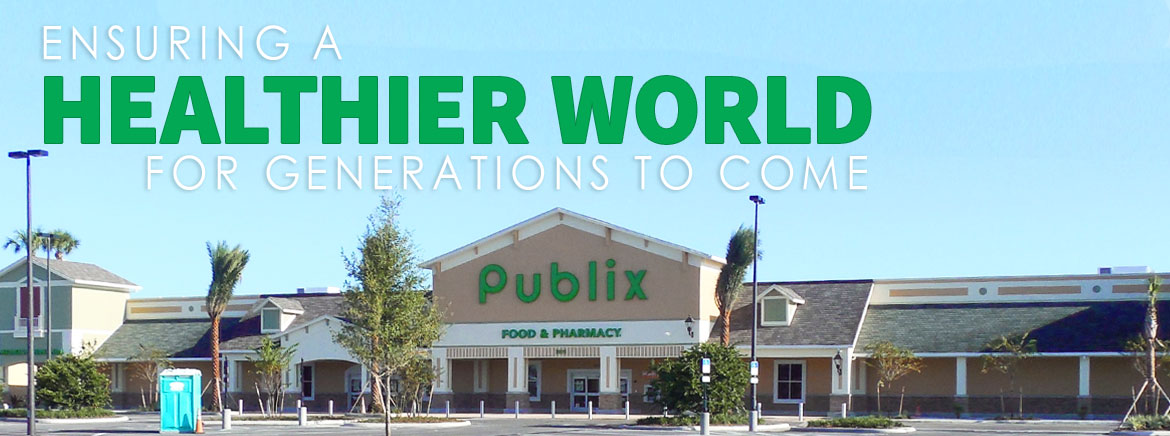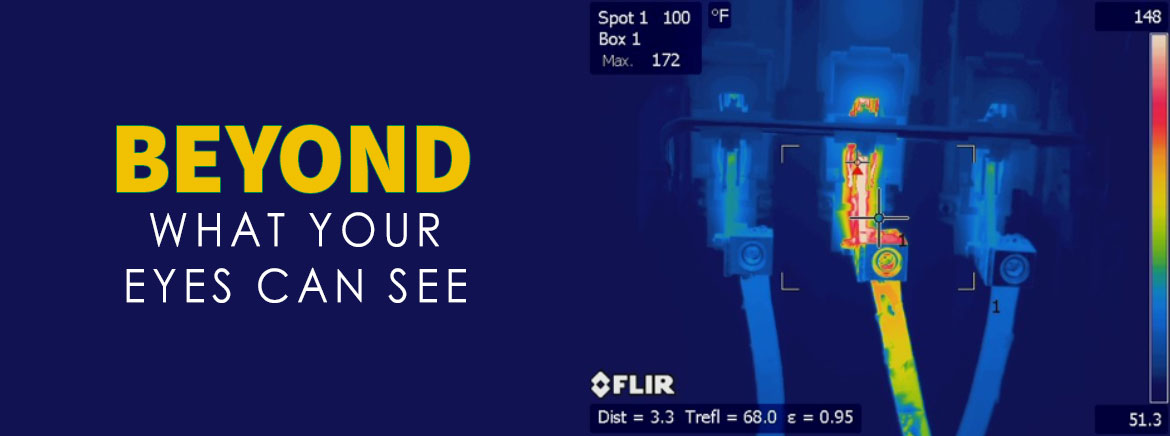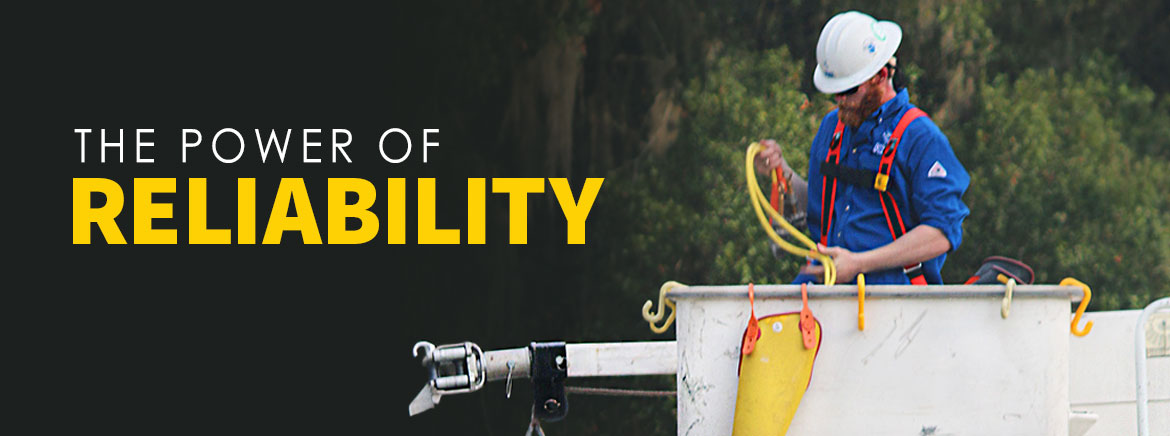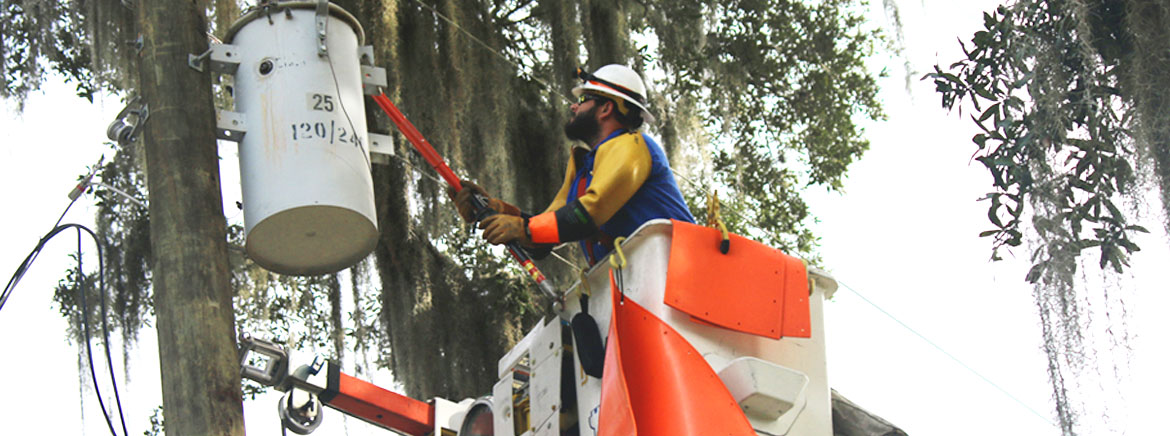Energy Insider – 1st Quarter

Squirrels, Raccoons and Birds Oh My!
SECO Energy’s pursuit to deliver the most reliable electric service is challenged by a number of uncontrollable circumstances. Storms and downed trees cause the majority of power outages, but animals dish out their fair share of damage.
Animal attacks on SECO Energy’s electrical facilities (overhead and underground) occur daily unlike seasonal storms. From subterranean to aerial assaults, animals big and small are constantly coming in contact with our equipment.
SECO’s quest to reduce animal-related outages is constantly evolving. SECO utilizes various types of animal or “critter” guards placed on poles and in our substations. These guards keep squirrels, raccoons, birds, snakes and other animals from shorting out power.
SECO also utilizes bird “discouragers” to deter birds from building their nests on a pole. On rare occasions, large wingspan birds, like the Florida Osprey, bypass traditional “discouragers” and continue building their nest on a pole. At this point, SECO installs state-of-the-art bird nesting dishes to prevent large birds from coming in contact with energized lines. You may have noticed our nesting dishes while driving about – they look like large grey saucers on top of our electrical distribution poles.
“Critter” guards and bird “discouragers” help protect small animals and birds – and save your cooperative thousands of dollars annually in labor and equipment replacement costs.
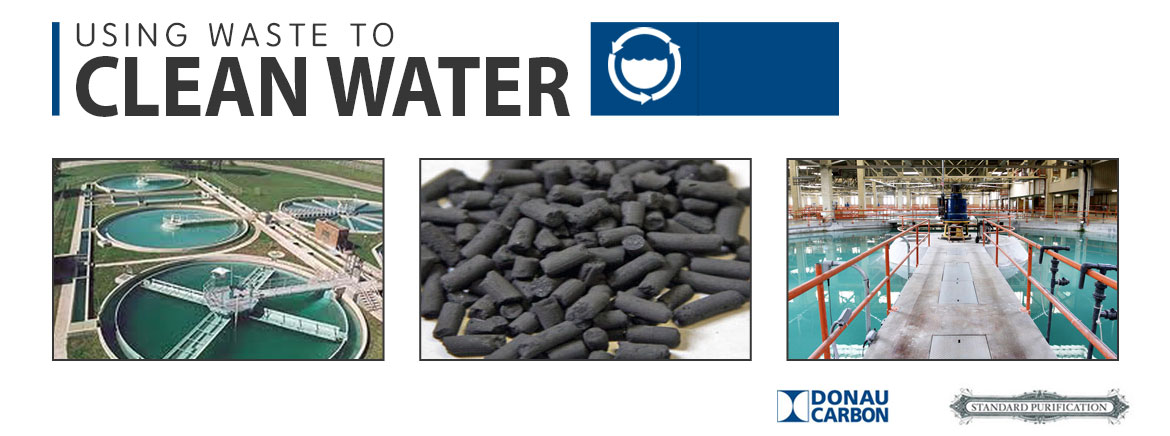
Using Waste to Clean Water
Watercarb, Stratocarb and Agcarb sounds like the next best thing in carbohydrates but don’t let the names fool you. They are actually forms of activated carbon produced at the Standard Purification manufacturing plant located at 551 N US Highway 41 in Dunnellon, Florida.
Powered by SECO Energy, Standard Purification began operations in 2010. In the summer of 2016, they merged with Donau Carbon, a global supplier of activated carbon located in three countries. Currently Standard Purification is only one of four plants in the US that produce these types of activated carbon aimed at purifying water, air and soil.
The process for making activated carbon at the Dunnellon facility uses reclaimed yellow pine ash. This wood byproduct is activated by high heat in a kiln. Next, it is cooled and ground into a fine powder. “It’s exciting to think that we can clean our environment by using a waste product such as wood ash,” says CEO Tony Julian who plans to increase plant production by 50 percent before yearend.
Watercarb is used in municipal potable water treatment and accounts for 90 percent of standard purification’s production and sales. This product primarily removes contaminants associated with the unpleasant taste and odor in water. It removes many organic, in-organic and synthetic contaminants from a variety of industrial processes including municipal, refinery, petrochemical and coal gasification, reducing the impact of industrial pollutants on waterways and drinking water supplies.
Stratocarb is used to remove mercury from flue gas emissions at coal fired power plants. Agcarb is widely used as a soil treatment where herbicides, pesticides and fertilizer have been over-applied. Often Agcarb is used to remove contamination in a variety of agricultural applications before re-seeding. It can also be used in environmental cleanup situations where there has been prior pollution.
To learn more about Standard Purification, visit their website at http://standardpurification.com/
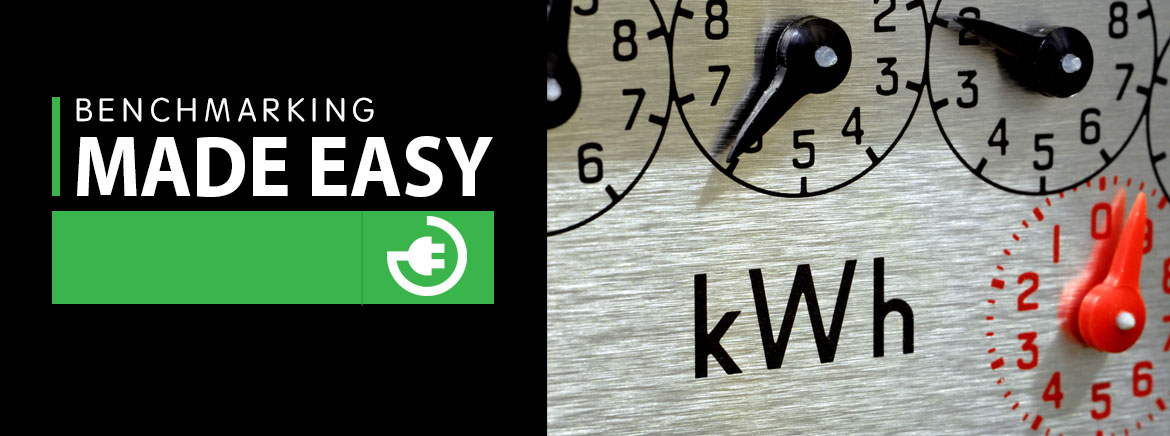
Benchmarking Made Easy
Are you a fan of tracking your favorite individual or team performance using statistics? Baseball and football coaches use numbers to validate performance through each respective season. They pour over these numbers to set up a successful shot at a championship. So why not benchmark your facilities by meter/building and measure energy performance?
Benchmarking helps to determine how energy is used and provides insight to high usage trends. Tracking energy (kWh) and demand (kW) against production cost may allow you to see how to increase energy efficiency. The Energy Star link below provides tools to assist you and useful side by side comparisons of like facilities. You can even earn an Energy Star Certificate for your efforts.
According to Lake County School Board’s Energy Program Manager Pete Myles, “benchmarking is important in our quest to be the best. The exchange of ideas and like metrics is an invaluable tool to keep the District’s dollars in the classroom with the students.”
If you are not benchmarking your energy consumption, then you’re not doing yourself any favors. Tracking electric consumption and tying this into production will show how well (or poorly) you and your team are actually performing. It’s a lot like tracking your vehicle’s fuel efficiency and understanding how driving habits, speed, start/stops and your car’s overall condition impacts the outcome.
If you decide to begin benchmarking your electric usage, SECO Energy can provide consumption histories for up to 36 months for comparison purposes.
The Department of Energy website includes tips and tools for benchmarking your energy consumption.
Energy Star has developed this stand alone spreadsheet to help you get started.

Our Changing World
At the New and Emerging Technologies (NET) conference held recently in San Diego, California, Alex Klokus, Futurism CEO, said we’re living in exponential times. Alex believes we won’t experience 100 years of progress in the 21st century, instead, it will be more like 20,000 years of progress. The expectation of the future is becoming less predictable each day.
Advancements in science are continually being taken to a new level with some things being more exciting than others. Of course, it may depend on who you ask. For instance, vegetarians and vegans may like the idea of lab grown meat. It is cleaner, safer and healthier – just produced in a different way. It’s the same meat as you get from an animal, it just begins through extraction of animals cells. It has no contaminants, no animals are harmed and in blind taste tests, no difference in taste has been noted.
If the idea of lab grown meat doesn’t excite you then maybe a cure for cancer, HIV and other diseases will. Right now scientists are experimenting with copying and pasting good DNA. So instead of taking prescription drugs to treat ailments in the future, patients may opt for an innovative gene-editing technology or genetic surgery to snip out harmful mutations and replace them with good DNA. Through this technology blind rats are beginning to see with partially restored vision. Just this past year in China they began testing on humans. Scientists believe they can even “create longevity” and dramatically extend human life since aging is now reversible in mice.
Advancements in science that may allow humans to live longer is good news for everyone or is it? Expected advancement of robotics and artificial intelligence (AI) may soon mean competition for jobs. In recent years, Science has shown us that AI can learn to play video games. Google Deepminds’ Deep Q-learning (AI) after just two hours figured out how to play Atari Breakout. After four hours it mastered the game better than any human. AI is making music and doing so involves creativity. AI can even reflect on how to do things better and has proven they can beat fighter pilots in combat simulations. If we can fundamentally solve intelligence we can do all things – right?
Then what about the electric utility industry? Electricity is the lifeblood that powers our nation and currently we’re going through a significant revolution – regulation, technology and economics are continually changing. Planning for future generation is becoming more complex because of the rate of change associated with new technologies and the public’s acceptance of such.
Although many people like the idea of “going green,” the economics of individuals doing so is still not favorable in most areas of the country and especially in Florida. In The Sunshine State, electricity remains a good value. In addition, those who have jumped on the solar bandwagon know rainy and cloudy days provide very little generating benefit so a utility-supplied backup is a must. After all, battery storage is still not affordable for the multitudes and although great gains are expected in coming years, right now batteries are not a viable option. However, in 2016, 39 percent of all new generating capacity that came online in the US was solar photovoltaic (PV). A large percentage of these were utility-scale projects.
Utility-scale projects are gaining in popularity because they are more economical to build than traditional roof-top solar. The large-scale projects most often provide power to wholesale buyers and not end-use consumers. Then there is “community” solar. A community solar arrangement allows the sharing of generated electricity to more than one household. This is the premise of SECO Energy’s Solar Life program.
Solar Life is an opportunity for SECO members to live a greener lifestyle without the upfront investment of traditional solar panels at their location. Subscribers pay a flat monthly fee of $32 for the output of four panels of our cooperative-owned two-megawatt array. The monthly output of the four panels is shown as a kilowatt hour credit on your monthly electric bill – reducing your utility-supplied power cost.
Who could have imagined just a short time ago your electric cooperative would be harnessing the power of the sun. Perhaps one day we’ll have time to ponder this more while enjoying our lab-grown meal delivered by our self-driving car and served by our robotic butler.
For more information about solar and SECO Energy’s Solar Life program visit us at www.secoenergy.com
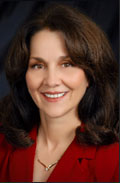
BARBIE SHAW
Manager of Key Accounts & Energy Services
OFFICE: (352) 569-9787
CELL: (352) 303-3567
barbie.shaw@secoenergy.com

HANK BOLDUC
Key Accounts Consultant
OFFICE: (352) 569-9789
CELL: (352) 303-3546
hank.bolduc@secoenergy.com

RYON MEYERS
Key Accounts Consultant
OFFICE: (352) 569-9781
CELL: (352) 636-9593
ryon.meyers@secoenergy.com
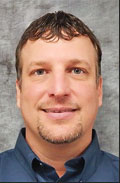
J.D. SIMMONS
Key Accounts Consultant
OFFICE: (352) 569-9790
CELL: (352) 303-3183
jd.simmons@secoenergy.com






